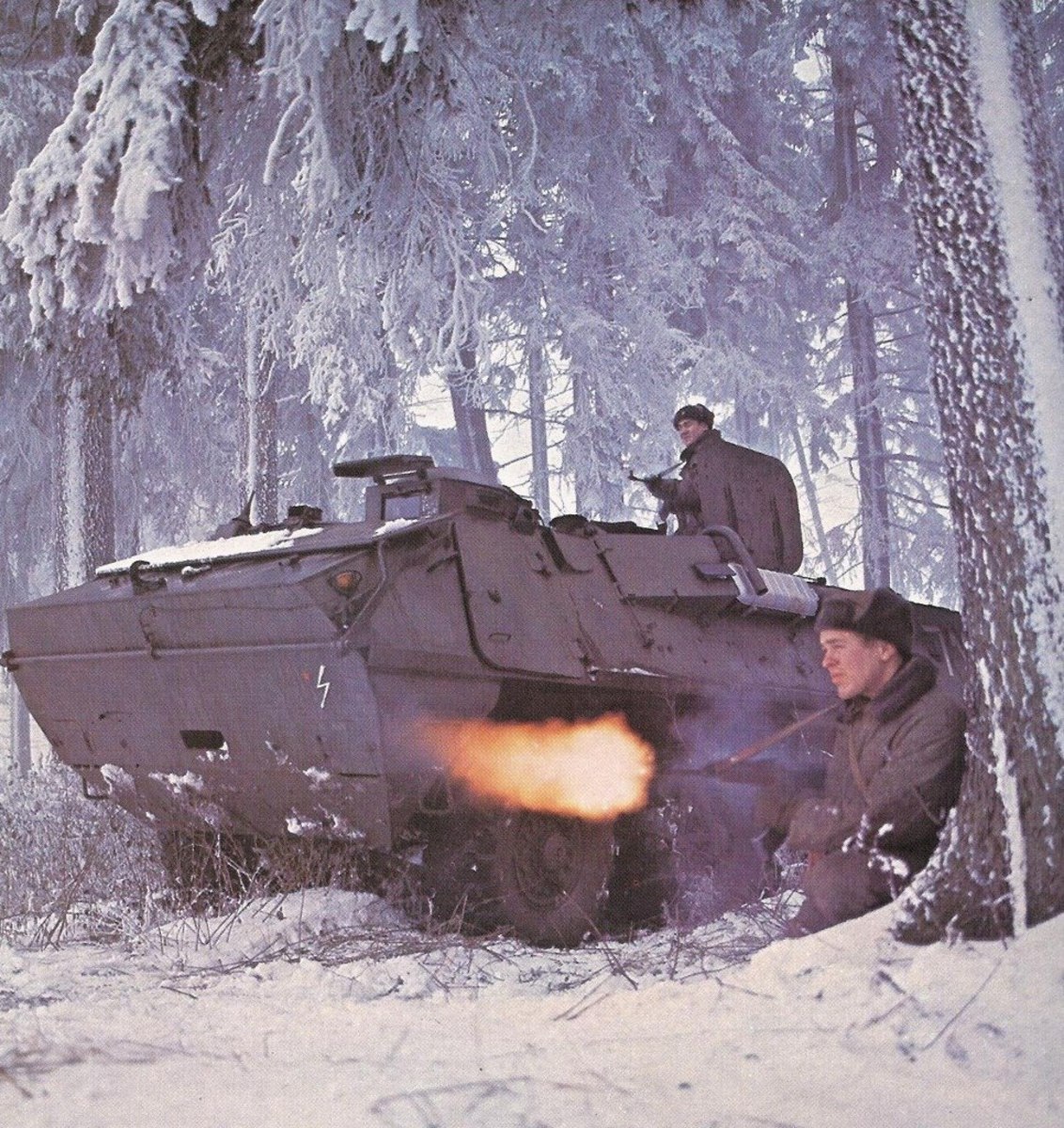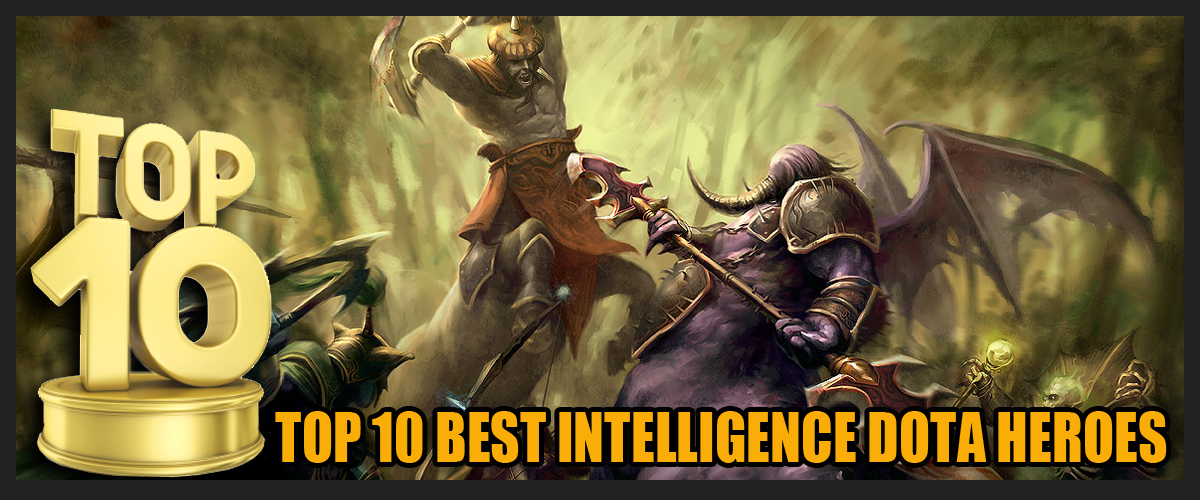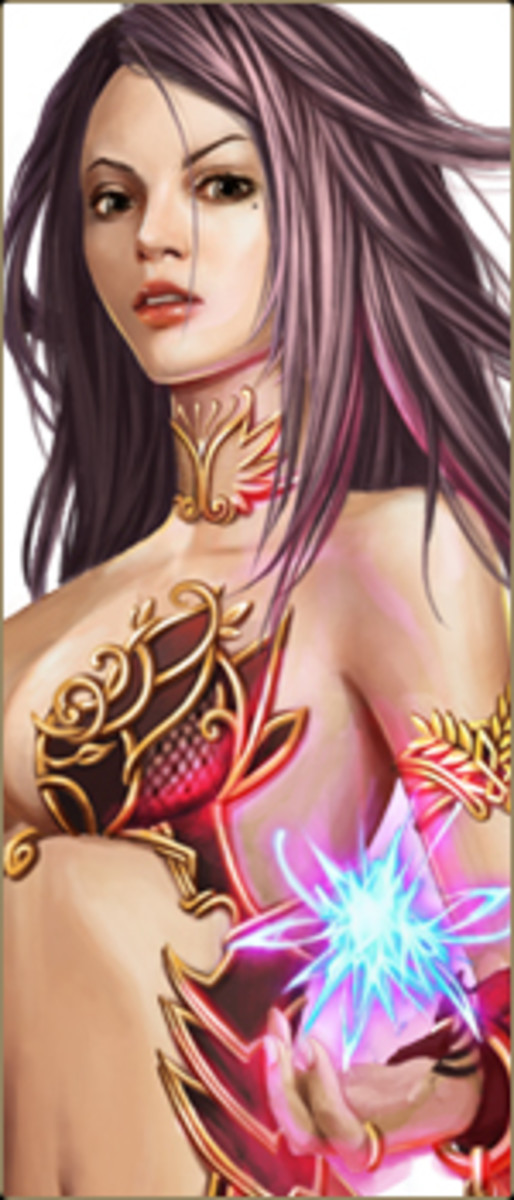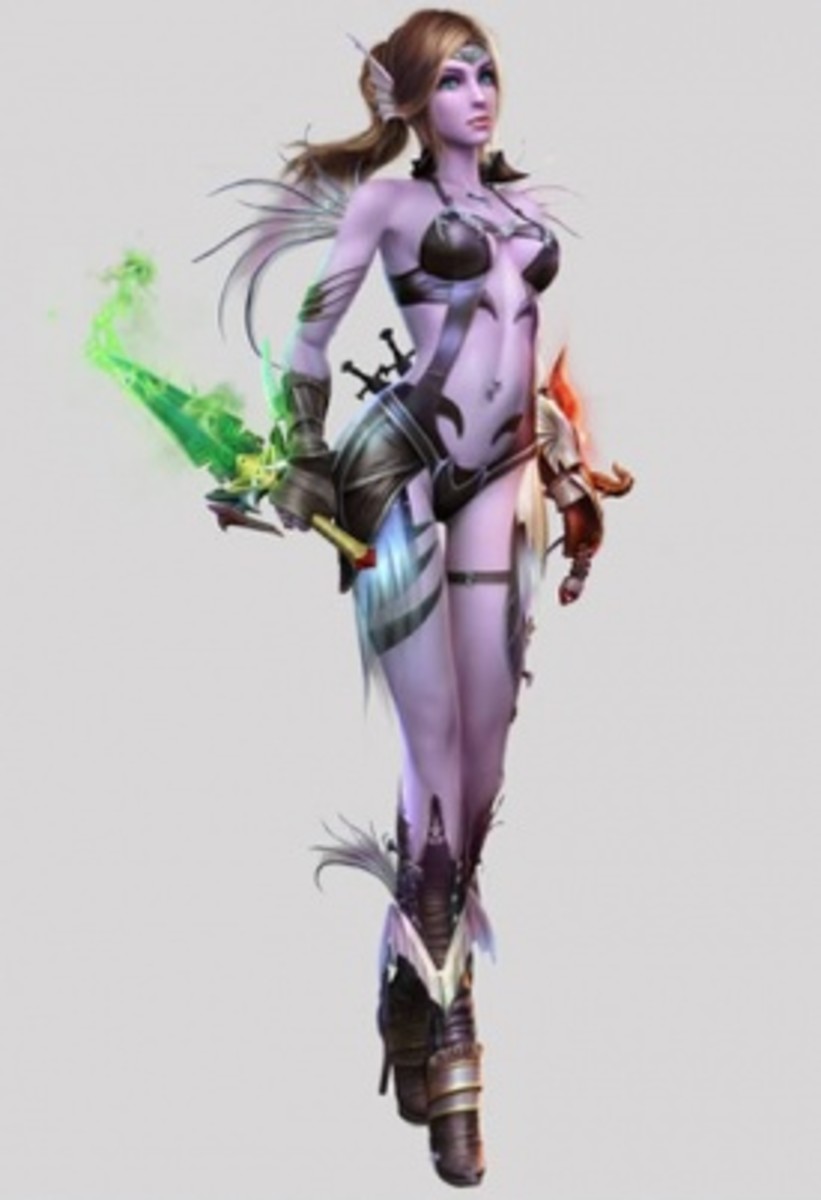- HubPages»
- Games, Toys, and Hobbies»
- Computer & Video Games»
- Online Video Games
How do I deal damage efficiently in World of Tanks?
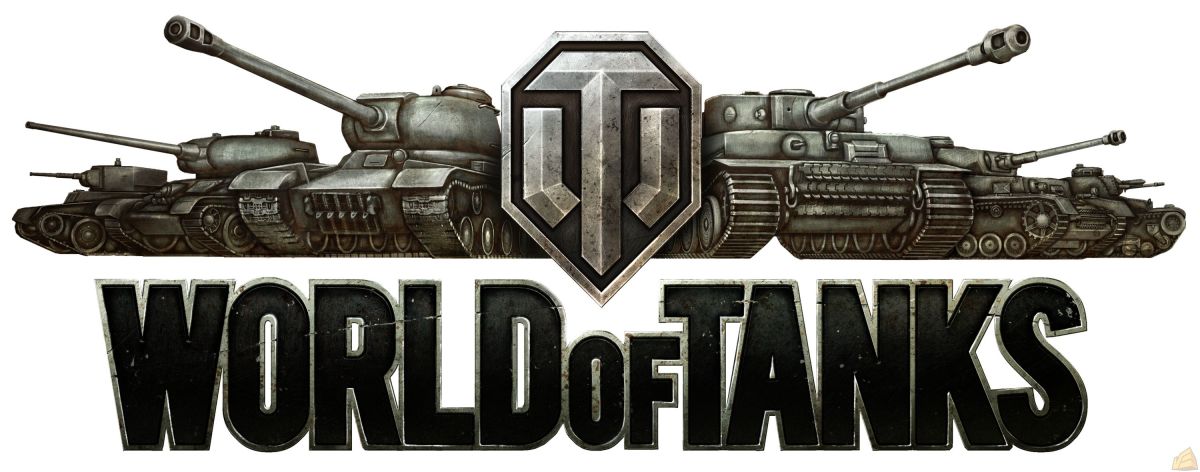
Introduction
World of Tanks is a free-to-play massively multiplayer online vehicle combat game for the PC and Xbox 360. There is also a mobile version for tablets and smartphones called World of Tanks: Blitz, available on the Apple store and the Google Play store. The game features tanks, artillery, and other armored fighting vehicles from the pre-WWII era to the Cold War era. Players start with the earliest tanks and earn experience points and silver from battles that are used to research and unlock modules for their current tanks and new tanks. Depending on the game mode being played, battles can range from 5 vs. 5 to 15 vs. 15.
Even though there are a variety of game modes, vehicles, and players with different styles, there are some game mechanics that remain relevant in all cases. In this article, we will discuss efficient damage and target selection. Are you an asset to your team, or are you just a shield used by better players to soak up shots? Exploring your damage efficiency can shed some light on that question.
This guide is written for the inexperienced player. Veterans of the game will likely find very little new information.

What is "efficient damage" and how does it win games?
All tanks have a few things in common. All tanks have a statistic called "Hit Points" or "HP." Each time a tank takes damage, the damage is deducted from a tank's HP. When the HP reaches zero, the tank is destroyed. In any game mode, destroying all tanks on the enemy team will result in a win.
It should be obvious to state that destroying all enemy tanks mean depleting all of the enemy's HP. It should also be obvious to state that losing all of the friendly team's HP will result in a loss. From this basic analysis, we can conclude that in order to win a game, a team must deal as much damage as possible while receiving as little damage as possible. The more damage a team can deal, and the less damage the same team receives, the more efficient that team is in winning the game through total destruction.
Every player in World of Tanks can check how efficient their damage dealing is through the Official World of Tanks Website by navigating to their own profile. On the profile is a meter that displays the ratio of total damage dealt divided by total damage received. A value of "1" means that for every point of damage a player dealt to the enemy, the player took a point of damage in return. A value greater than "1" is ideal and means a player deals more damage than the player receives. A value less than "1" means a player takes more damage than the player deals.
The difference between 1 and a player's own value indicates how efficient (greater than 1) or inefficient (less than 1) a player has been in games. If player A has a ratio of 1.75 and player B has a ratio of 1.25, then player A is far more efficient than player B at dealing damage to the enemy team and is likely to have a higher win rate. Players that have a ratio far under 1, such as 0.5, are likely to have a much lower win rate.
Every tank is limited in how much damage they can receive before being destroyed. This makes a very simple rule of thumb that every tanker should follow. In each game, your goal should be to cause more HP in damage than your vehicle has in HP. If a tanker can accomplish this every game, then he is guaranteed to have a damage dealt to damage received ratio greater than 1.
Dealing efficient damage means mitigating the number of shots you are taking in return for every shot you send out. There are a variety of ways to do this in any tank. Some methods are ideally suited for a specific class of tank, and some methods can be accomplished in any tank. All methods involve an attempt to deal damage while taking less in return. The best methods involve no return damage. This is the ideal situation for any tanker.

Fade Away
This method is useful on a map that has lots of hard cover. A friendly tank can use buildings, boulders, and the environment (hills and depressed ground) as hard cover. A friendly tank puts hard cover between itself and an enemy target. The friendly tank waits until confident the enemy tank cannot fire. The enemy either has his gun pointed elsewhere or has just fired and is reloading. The friendly tank pulls out of cover. A shell is fired at the enemy vehicle. Immediately after firing, the friendly tank then pulls behind hard cover, out of sight of the enemy gun. The enemy vehicle takes one shell worth of damage, and the friendly tank takes no damage.
Inside of a city, a friendly tank can hide just behind the corner of a building. Note that this only applies to buildings that are not destroyed by shells. When an enemy target is spotted around the corner, the friendly tank just has to wait until the target cannot fire immediately. The enemy does not have the gun pointed at the corner or is reloading. The friendly tank can then pull out, fire a shot, and then pull behind the corner again. By the time the enemy tank turns the gun toward the friendly tank, or is reloaded, the enemy tank has no shot because the friendly tank is behind hard cover.
In an outdoor map, a boulder can provide the same cover as a building. A friendly tank can mitigate incoming fire by putting the boulder between itself and the enemy who is firing. When the enemy can not fire, the friendly tank can pull out, fire, and fade behind the boulder again before a return shot can be fired.
In an outdoor map, hills and depressed ground can provide hard cover. A friendly tank can put a hill between himself and an enemy target. When the enemy cannot fire, the friendly tank can pull around the side of the hill, or over the top to crest it, in order to fire and then fade away behind the hill before a return shot can be fired. A friendly tank can also use depressed ground to leave the line of enemy fire, only coming out to fire when beneficial.
Depending on the tank, and the enemy's attention, multiple rounds may be fired before having to fade away behind cover. Tanks that have a quick reload might be able to fire multiple shells before the enemy can turn the gun. Some enemy targets will stay focused on another target, allowing the friendly tank to fire with impunity.
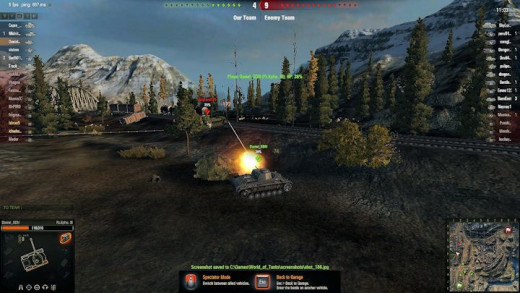
Trading Shots
This method is useful when the friendly tank is using hard cover and has a gun that deals more damage than the enemy target. The friendly tank and an enemy tank maneuver so that there is hard cover between them. The enemy tank is moving out of cover to fire at the friendly tank. Both tanks fire when a shot presents itself, then one or both tanks maneuver again to put the hard cover between them while reloading. Both tanks take damage, but the friendly tank deals more damage than it takes due to a larger gun. The trade is efficient for the friendly tank because it is able to deplete more HP than it loses in the trade. Just like the Fade Away technique, a friendly tank can use buildings, boulders, and the environment as hard cover.
This method can also be used with tanks that have a higher rate of fire than the enemy. The enemy tank can pull out and fire while the friendly tank can put two more shells into the enemy before the enemy can take cover or fire again. Some tanks have automatic loading magazines which enable them to fire multiple shells before having to reload. The American T57 Heavy, the French AMX 50B, and the German Waffentrager Auf E 100 are all examples of armored fighting vehicles with automatic loading magazine guns. An automatic loading tank can empty a magazine into an enemy before the enemy can fire a second shot, making the damage trade efficient for the friendly tank.
Just because a tank has a high rate of fire does not mean that trading shots will be efficient. An example would be an American M3 Lee trying to trade shots with a Russian KV-1. The M3 Lee has a 75mm gun that does around 110 damage per shot with a rate of fire around 16.67 rounds per minute while the KV-1 has a 122mm gun that does around 450 damage per shot with a rate of fire of around 5.17 rounds per minute. In order to make the trade valuable, the M3 Lee would have to land 4 shots for every shot the KV-1 fires. In this case, the M3 Lee is not advised to trade shots as it is unlikely to get out 4 shells before the KV-1 can reload and fire again.
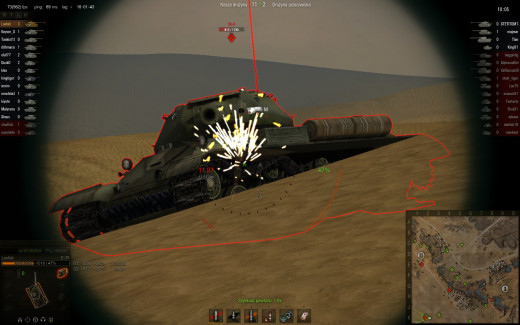
Hard Armor
This method is useful when the friendly tank has enough armor that the enemy tank has trouble penetrating it. The friendly tank and an enemy tank maneuver so there is hard cover between them. The friendly tank pulls out to take a shot at the enemy. The friendly tank's shot penetrates the enemy tank's armor and deals full damage. The enemy tank takes a return shot, but the shell fails to penetrate the friendly tank. The friendly tank takes no damage.
There are tanks at every tier that has armor considered to be very good. Tanks at the same tier or lower will have trouble getting through the armor. The British Matilda (tier IV) has 75mm of armor at the front of the tank. The Matilda is known for bouncing shells from tier V and tier VI tanks if the drive has the armor angled correctly. The Matilda can use its thick armor and high rate of fire to efficiently deal damage to enemy tanks while stopping the incoming shells at the same time.
Another example of a tank that can shrug off most incoming fire is the Russian IS7. The frontal armor is thick and sloped, making it efficient to go head-on with almost any other tank in the game. Tanks facing down an IS7 will have to get creative and choose damage dealing scenarios where the IS7 cannot return fire.
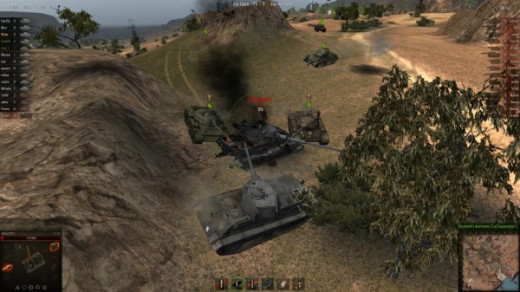
Wolf Pack
This method involved multiple friendly tanks assault an enemy target at the same time. There may or may not be any cover between them. One friendly tank will engage the enemy tank head-on. Another friendly tank will move to a flanking position beside or behind the enemy tank. There may be multiple friendly tanks in flanking positions. The first friendly tank takes damage from the enemy tank, but the flanking friendly tanks fire with impunity. The rate of fire of multiple guns deals more damage to the enemy tank than any of the friendly tanks take in return. The method can be used multiple times, with the first tank position being rotated among the friendly tanks to prevent any one friendly tank from taking too much damage and being destroyed.
This method is most commonly used when multiple players on a team are communicating very well, usually inside a platoon, which is a small group of players who play in the same games together continually. Enemy tanks are isolated and quickly destroyed, and incoming damage is spread evenly among the friendlies to prevent their destruction.
These three friendly tanks use focused fire to defeat a group of four enemy tanks. Notice the enemy fire is divided between the friendly tanks and that the friendly tanks are able to stay alive longer than their opponents due to this.
Focused Fire
This method involves multiple friendly tanks engaged with multiple enemy tanks. The groups may or may not be the same size. The enemy tanks each select a separate target to fire at. The friendly tanks all select the same target. Each salvo from both groups does damage. Because the friendly tanks are focusing their fire on a single target, the enemy tanks lose one of their own before the friendly tanks do. The friendly tanks then focus on a new enemy target. The friendly tanks are taking enemy tanks down at a faster rate than their own casualty rate, and end up winning the engagement by destroying all enemy tanks. The friendly tanks might lose some tanks, but deal more damage than they received. This puts the friendly team in a better position than the enemy team after the engagement.
Many teams know this tactic is the secret to success and use it to exploit enemy teams that do not communicate well. As the enemy loses tanks, they lose the ability to return fire, which is advantageous for efficient damage dealing.
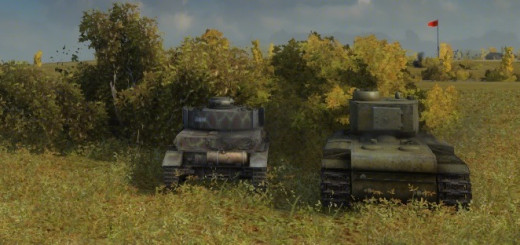
The Ambush
This method is useful for tanks with high camouflage ratings. A friendly tank spots an enemy tank. The enemy tank does not spot the friendly tank. The friendly tank pulls away from the enemy tank and then fires to reduce his chances of being spotted. The enemy tank does not know the position of the friendly tank and cannot return fire.
Veteran players can also refer to this tactic as the "Invisible Tank" because the target cannot return fire unless he knows the position of the firing tank. Tank destroyers and light tanks have good camouflage ratings, and can spot larger tanks at greater distances. Bushes are soft cover but can prevent a tank from being spotted by using them as hiding places. These tanks can also have equipment and training to help keep them undetected. Camouflage nets help stationary tanks remain undetected and camouflage training for the crew adds to a vehicle's camouflage rating. Other equipment, such as binoculars, and skills such as recon, help these tanks spot targets at greater distances, reducing their own chances of being detected by keeping their targets at a greater distance.
Conclusion
Efficient damage dealing means dealing more damage to the enemy than is taken in return. Damage dealt divided by damage received is a key metric for players to understand if they are helping or hurting their teams by dealing damage efficiently. Players who deal efficient damage have higher win rates than players who pay for damage with their own HP because efficient damage dealers leave their teams in better positions than inefficient damage dealers. Efficient damage can be dealt with a variety of tactics depending on the tank being driven and the enemy target selected.
What is your favorite method for dealing efficient damage?
![World of Tanks - Starter Pack [Online Game Code]](https://m.media-amazon.com/images/I/61Qc0XSUjtL._SL160_.jpg)
![World of Tanks - Expert Pack [Online Game Code]](https://m.media-amazon.com/images/I/61u1WV9pYaL._SL160_.jpg)

